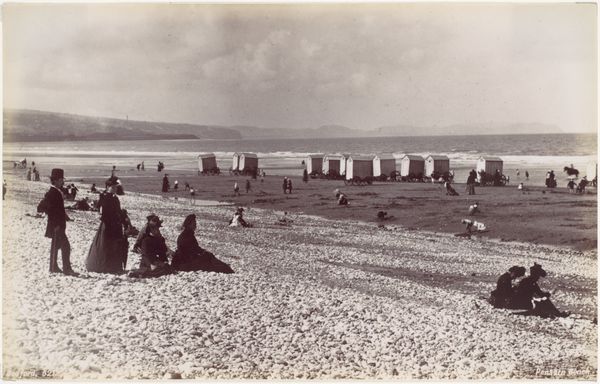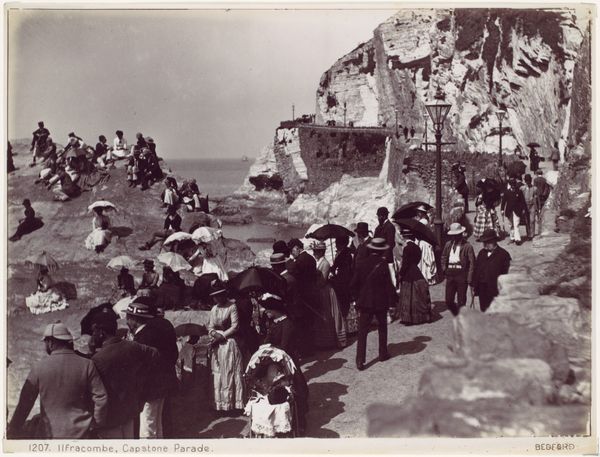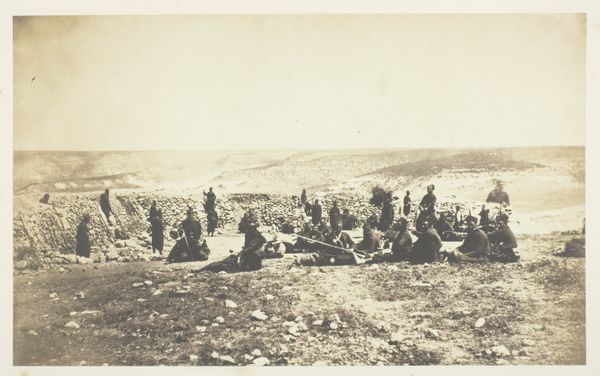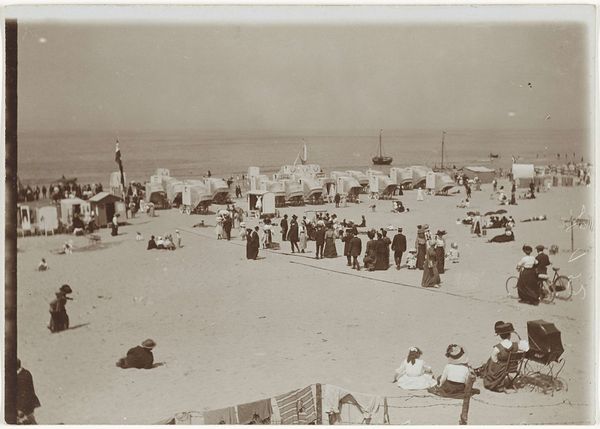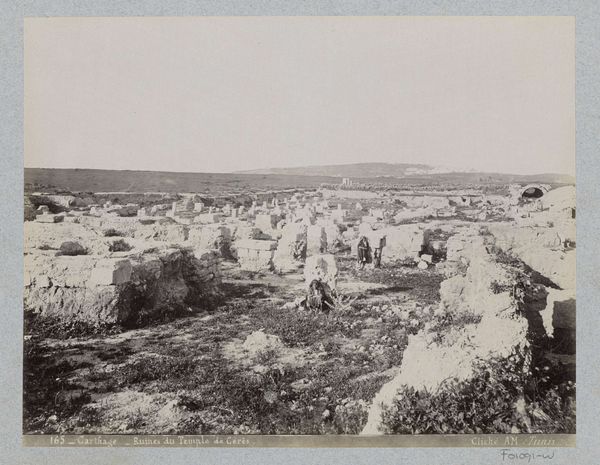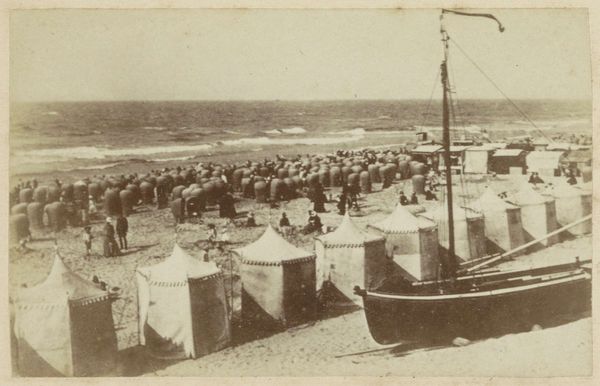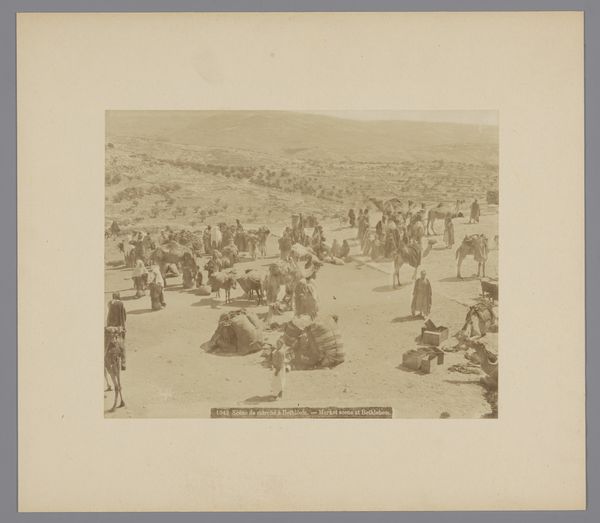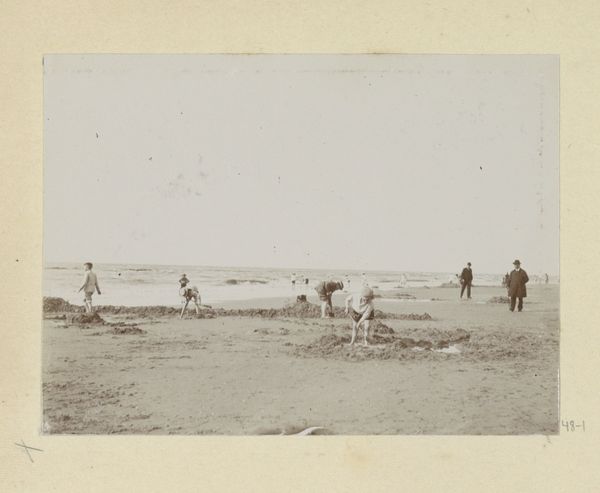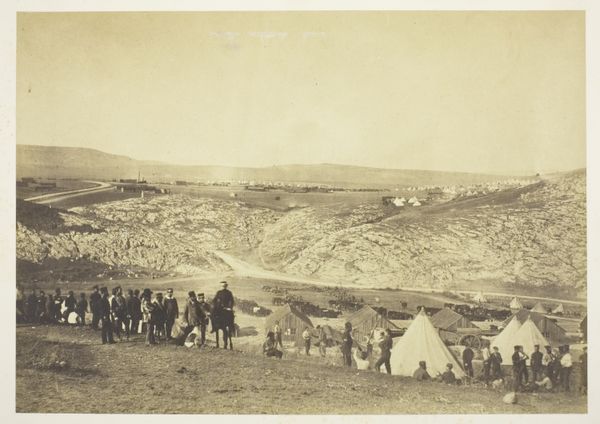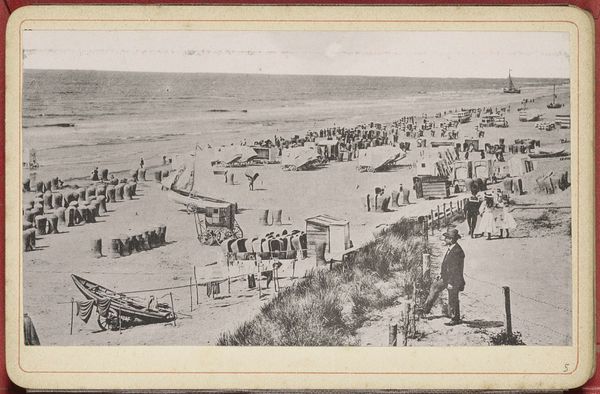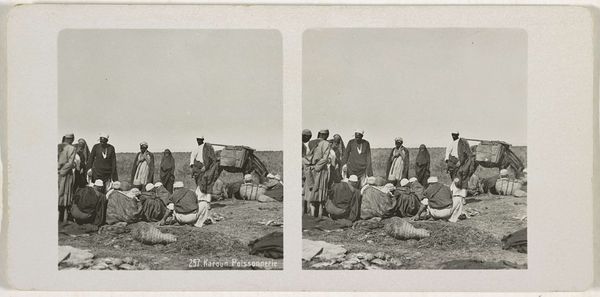
Dimensions: Image: 12.6 × 19.9 cm (4 15/16 × 7 13/16 in.)
Copyright: Public Domain
Editor: Here we have Francis Bedford's "Pensarn Beach," taken in the 1860s. It's a gelatin-silver print and quite stunning in its detail. The sheer quantity of detail is intriguing, the eye is drawn to individual people even though there is an expansive beach on display. What stands out to you in terms of visual language? Curator: The photograph, in its arrangement, presents a compelling study of visual textures. Consider how Bedford uses light and shadow to articulate the shingle beach in the foreground. Note how the tonality creates contrasts to distinguish these elements from the figures and bathing machines along the horizon line. Editor: That’s a really interesting point. So you’re saying the success of the image is primarily from a calculated and self-aware treatment of the material? Curator: Precisely. Observe how the eye is led across the plane of the picture—from the detailed pebbles to the softer, almost indistinct, forms in the distance. This play of sharpness and blur is not accidental; it directs the viewer's gaze and contributes to the picture's structured composition, creating an intentional formal tension between foreground and background elements. Editor: So, less about documenting a day at the beach, and more about manipulating visual elements for their aesthetic impact? Curator: It is both. Yet, let’s observe primarily through Bedford’s technical strategies for composing shapes within the picture frame. How might he have positioned his camera, selected the angle of light, and even manipulated the developing process to achieve this composition? Editor: That really changes how I see it! Now, I notice the very deliberate use of focus. It really reframes my view of it. Curator: Indeed. Bedford’s work compels us to engage in thoughtful assessment of intrinsic form, rather than purely interpreting content for broader contextual relevance.
Comments
No comments
Be the first to comment and join the conversation on the ultimate creative platform.
